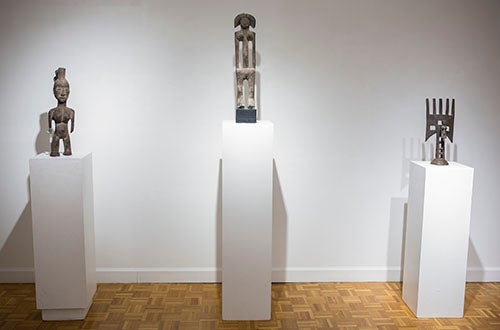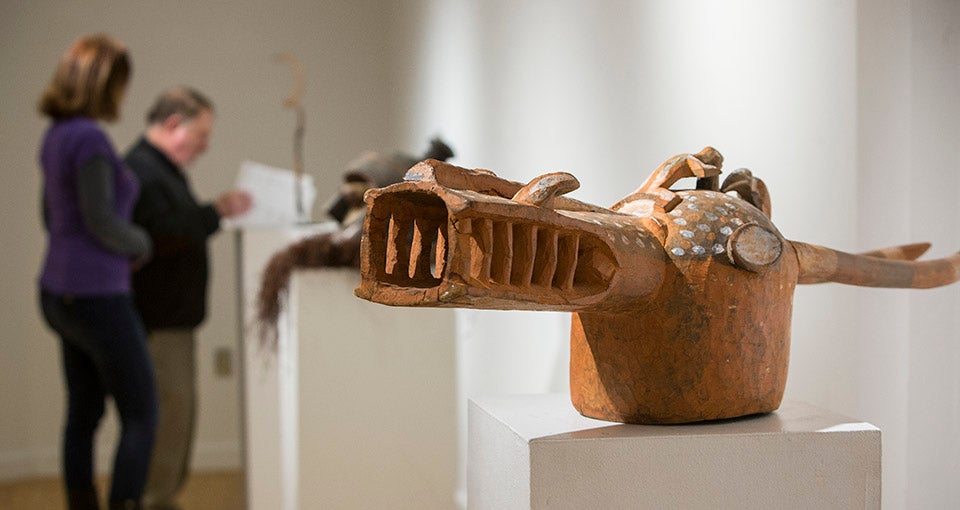‘BEST OF THE COLLECTION’
Hundreds of African art pieces on display
For the first time ever, most of East Carolina University’s extensive African art collection is being exhibited simultaneously at six different sites during February.
With close to 600 pieces, ECU has one of the most important university-held teaching collections in the United States, said Ken Wilburn, history professor at ECU.
The functional and ceremonial African art – mainly from central, western and southern Africa – includes headdresses, sculptures, vessels, jewelry, weapons, musical instruments and rare examples of figures and masks.
To celebrate the exhibition, host sites will hold receptions with African foods from 4 p.m. until 6 p.m. Thursday, Feb. 12. The event is free and open to the public. It’s also an official passport event for students.
Maps will be available at each of the exhibit sites: Erwin Gallery in the College of Fine Arts and Communication, the Honors College in the Mamie Jenkins Building, Joyner Library, the Ledonia Wright Cultural Center and the School of Art and Design’s Jenkins Fine Art Center Wellington B. Gray and Burroughs Wellcome galleries.
“This collaboration will showcase the best of the collection,” said Dr. Chris Buddo, dean of the College of Fine Arts and Communication. “This is the first time we’ll be able to get a significant portion out for people to see.”
ECU amassed the pieces over the past 25 years from three individuals: Winston-Salem physician James L. Lankton, Wilmington collector and dealer Charles Jones and an anonymous donor.
Wilburn, who uses the collection as part of his History of Africa class, said viewers should be mindful that the pieces were created for function, not admiration. “Each piece was created to fulfil a purpose in its village of origin,” he said.
For instance, African masks are often used in coming-of-age initiation ceremonies. Traditional African art is also used for religious rituals, Wilburn said.

The African art on display throughout campus during February aims to bring awareness to traditional African societies and cultures.
“ECU’s African art collection is an extraordinary teaching collection that can be used to facilitate discussions of traditional lives in African societies and cultures,” Wilburn said.
More than 250 pieces come from the central African Kuba region and may be the largest collection in the country, Wilburn said. “When the Kuba section was first exhibited at ECU about 20 years ago, a member of the Kuba royal family was present,” he said.
Wilburn hopes the exhibit will bring awareness to traditional African societies and cultures.
“As they view and study the many provenances of ECU’s African art collection, our students will increase their global identity, respect for diversity and knowledge of their origins,” Wilburn said. “Ultimately, (the) collection will help our students become more civilized and more human.”
The African Student Organization and Invisible Children have helped plan the reception and will have student hosts at each site.
“I hope that students will gain a greater appreciation for Africa,” said Rejoice C. Asomugha, a nursing major and vice president of the ECU African Student Organization. “I hope that they realize how richly Africa is blessed in culture and in talent.”
The exhibition is an outgrowth of ongoing efforts to establish permanent display space for the African art collection at ECU, Buddo said.
